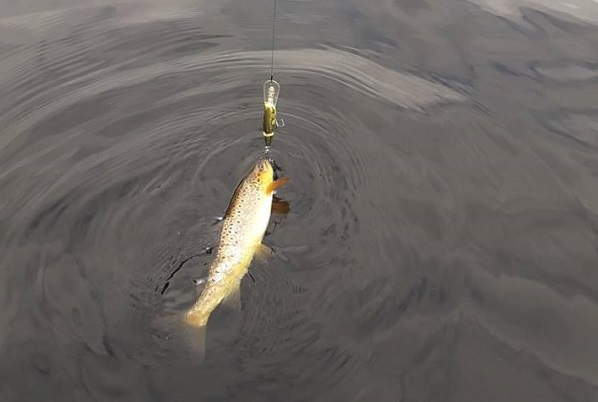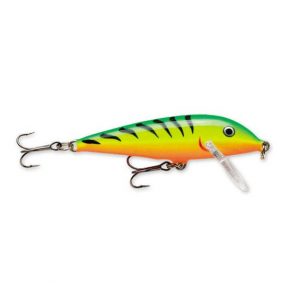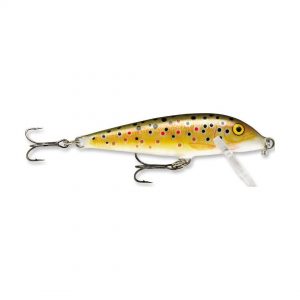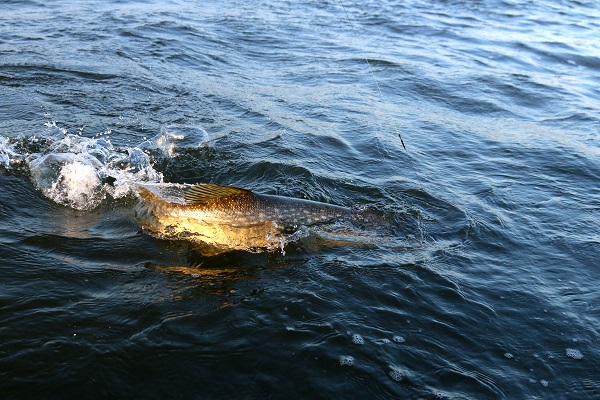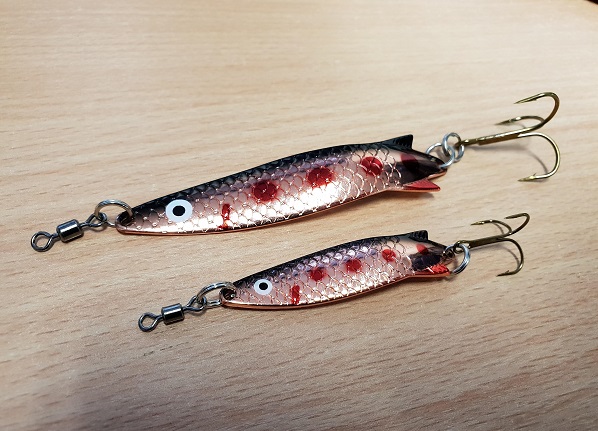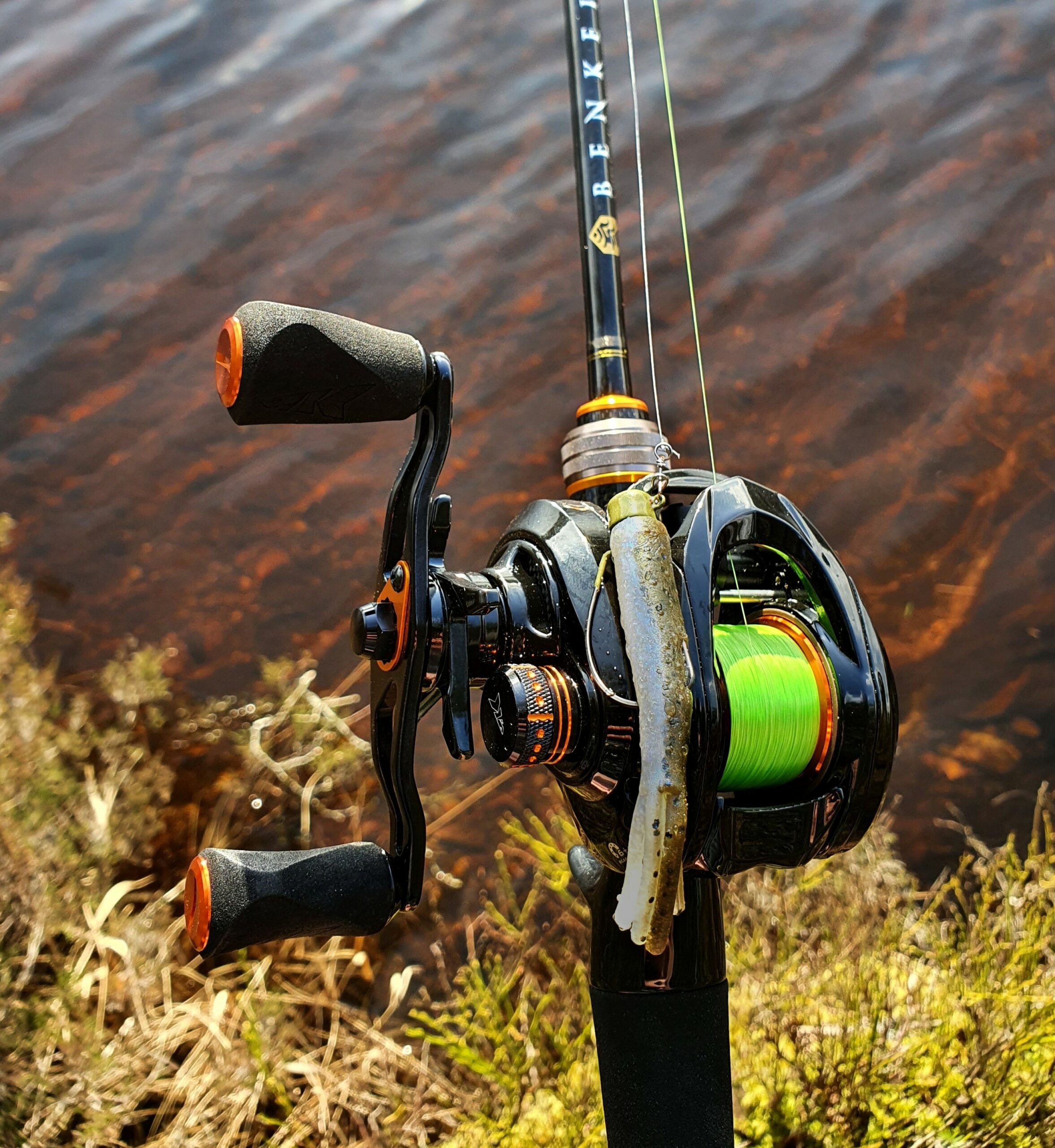When it comes to lure fishing for most species, there are general rules of thumb that anglers abide by. Don’t get us wrong though, sometimes you will find yourself doing something that is completely against the grain that will provide results – that’s just angling! Below are a few tips that will hopefully help you increase your chances of catching.
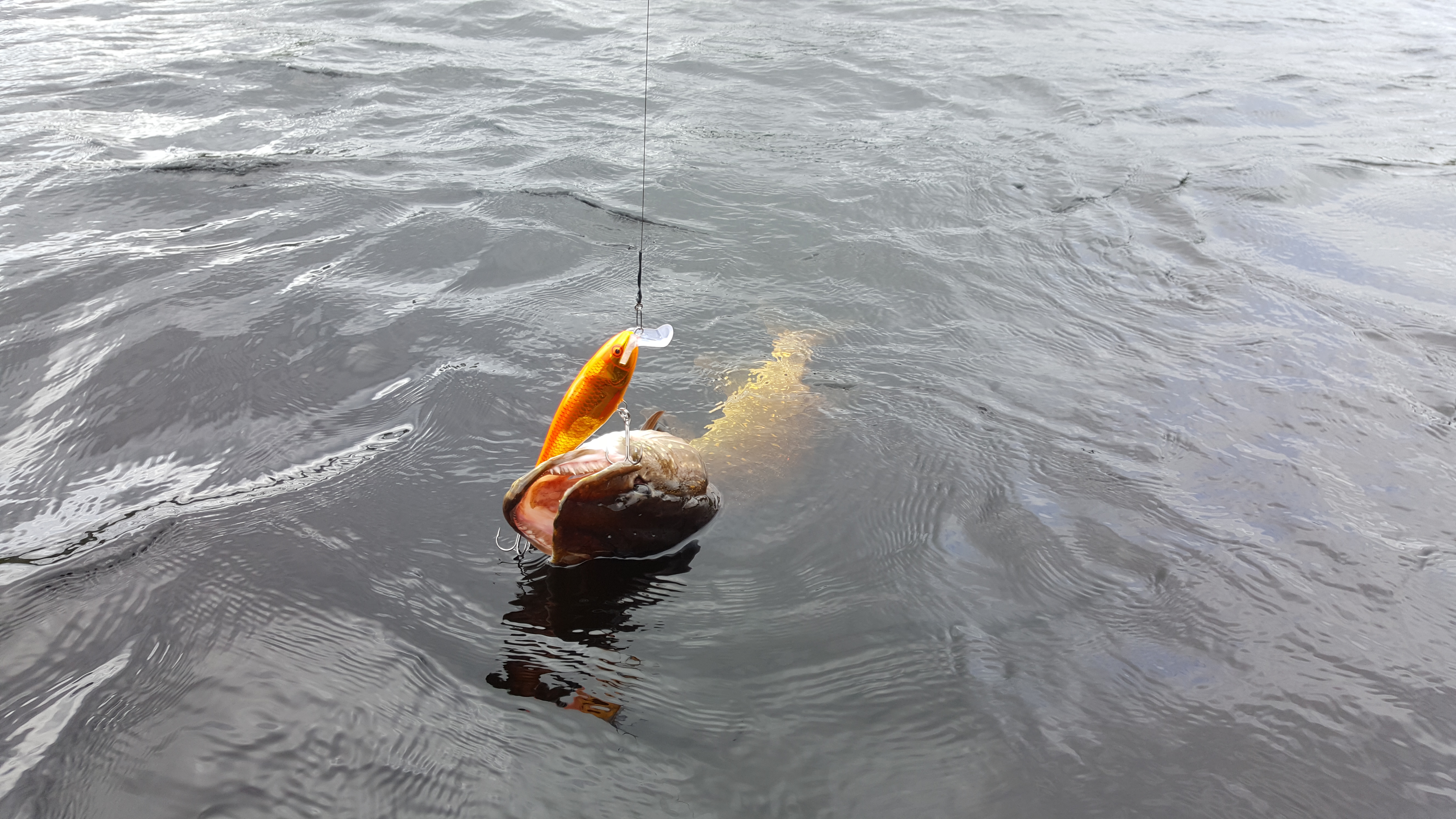
A pike taken on a bright lure in poor water clarity.
CHOOSING THE RIGHT LURE COLOUR
When it comes to lure colour choice, try and buy 2 lures in two different colours or patterns – a natural or subtle colour and a hot colour (fluorescent) this will ensure you have a lure for various water clarity and light conditions. Natural or subtle patterns are ideal for good water clarity or bright light conditions, they can be easily seen and usually mimic the colours of prey fish present in the water.
- Hot Colour/Bright pattern
- Natural/Subtle pattern
Hot colours on the other hand, are perfect for low light conditions and murky water. They stand out better. As said earlier, these are just a rule of thumb and both can work in the opposing conditions. Darker natural patterns can work well in low light conditions as they can offer a larger/clearer profile in the water, while hot colours can be the difference/change that could trigger a take as you’ve presented something that your quarry has never seen before.
Don’t dismiss black coloured lures either, a very underrated colour that can be applied to all scenarios effectively. Black provides a very prominent profile in murky water/low light conditions as well as clear water/bright conditions.
CHOOSING THE RIGHT LURE SIZE
Lure size is more important than you may think. In most cases, you want to try and match the hatch. If there are an abundance of small minnows or fry present, then using a lure 5 times the size of the prey fish might not be the most logical approach to start with – don’t disregard that though – it’s all trial and error. However, we need to ‘crack the code’ to catching first and by ticking the check boxes of the knowledge we have of the water that we are fishing first, will give us an indication of what they want and what they don’t want.
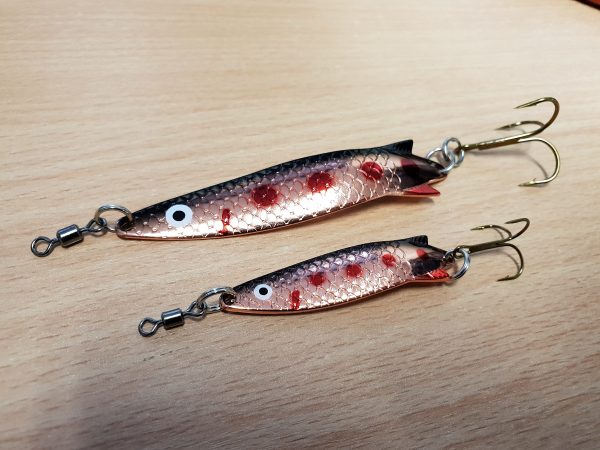
Upping lure size can see you increase your average size of fish.
If you become pestered by below average sized fish, then stepping up the size of the lure to deter these fish makes logical sense. Larger lures also displace more water and have a larger profile, which can be beneficial in murky water/low light conditions.
Don’t forget to change lure size throughout a lure fishing session, especially if you’re not catching. It might be the change that triggers a take.
LURE ACTION
Lure fishing in the UK is more popular than it has ever been and there are so many various lures on the market and influences coming from the Scandinavian and US market. Our choice in lures and lure actions are unbelievable.
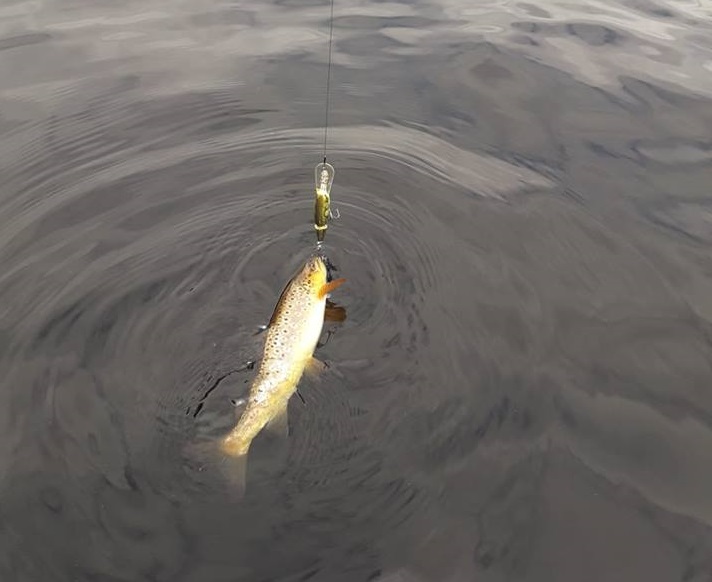
This brown trout couldn’t resist the internal rattle from this Rapala jointed shad rap.
Just like colour and size, lure action is just as important. We’ve all been there, out in the boat doing a drift, watching our boat partner bag up on fish because the unique action that a specific lure they have been chucking has out fished every lure we’ve had in our own lure box. Being versatile is key. As we mentioned before, it’s about cracking the code!
Subtle action lures are good in clear water conditions while aggressive action lures that contain internal rattles or blades that provide vibration or displace a lot of water are ideal for murkier waters, as it allows fish to hone in on the disturbance.
LURE RUNNING DEPTH
Finding out how deep the fish are lying is key. Finding the correct depth with the right lure will put you in the strike zone quicker and keep you there longer. Cover water strategically, by taking a selection of lures that will cover various depths to the deepest areas of the waters you fish will allow you to fish efficiently and help you locate fish quicker.
LURE RETRIEVE
Mix it up! Vary your retrieve with each cast, try a steady retrieve then employ a stop-start retrieve all the way through to jerking the lure. Testing various retrieves will allow you to find a retrieve that is the trigger stimulus for that lure on that specific day.
Hopefully we have given you some food for thought. Implementing and following these basic rules will help you cover water more efficiently and make you think with a more strategy-based approach when selecting your next lure to cast.
LURES
Bluefox Vibrax Shad Single
from £2.99Mepps Aglia Flying C Lure
from £4.99Megabass Vision 110 Lures
from £24.99Kenley Toby Wever Metal Spoon Lure
from £2.49Abu Garcia Toby Lure
from £3.97from £4.29Abu Garcia Hi-Lo Floating
from £4.97from £9.99


